Seoul, the Capital of Korea

Seoul is the capital and largest metropolis of Korea. Home to over 10 million citizens, Seoul is one of the largest cities in the world. Renamed after the independence of Korea in 1946, the word "seoul" is derived from a Korean word meaning "capital city". Seoul is roughly divided into northern and southern halves by the Hangang (River) and is surrounded by vast mountain. This fast-paced and high tech city embraces both tradition and modernity, making it a very unique city.
The History of Seoul

Situated at the heart of the Korean Peninsula, Seoul has always been an important strategic point in terms of defense and economy through the centuries, from one kingdom to the next. The three kingdoms of Baekje, Gogyuryeo, and Silla (BCE 57 – CE 688) all fought over the area that is now Korea’s capital. Indeed, whichever kingdom claimed Seoul became the dominant power. The Joseon Dynasty (1396 – 1910) declared Seoul its capital, a role that Seoul still plays to this day.
Seoul, the Gateway to Asia and Europe
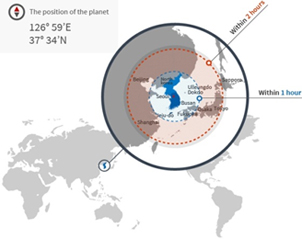
The Korean Peninsula lies in the center of Northeast Asia. The coordinates of its capital Seoul are 37.34° N, 126.59° E, a spot slightly nearer to the Yellow Sea. Seoul is within 3 hours’ flying time from 43 cities with a population of over one million people. Korea’s location between China and Japan has been the nation’s geographical advantage.
City Center
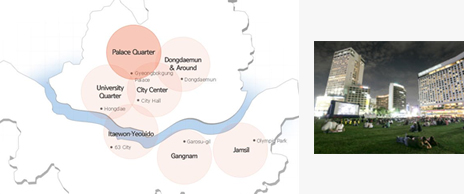
The City Center, home to City Hall and major destinations, is located in the heart of Seoul. Take a romantic stroll through one of Seoul’s most beautiful paths. Deoksuhung’s Stone Wall Path, then go shopping at Myeong-dong or Namdaemun Market. When the sun sets, head up to N Seoul Tower for the most stunning nightscapes of Seoul.
Dongdaemun & Around
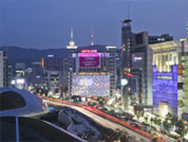
Shopping, nature, and food – all-in-one. Go on a romantic stroll through Iwha Art Village and Naksan Park then go all-night shopping at Dongdaemun Market, the fashion town that never sleeps. Enjoy live outdoor show at Marronnier Park or a musical theater performance at any of the 90-some theaters at Daehak-ro, the performing arts Mecca of Seoul.
Palace Quarter
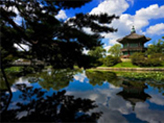
Visit the Royal Palaces, Jong-no, Insa-dong, and Bukchon, all of which safeguard the 600 year history and culture of the Joseon Dynasty. Experience the life of a Korean royal family at Changdeokgung (Palace), then take a stroll through Bukchon Hanok Village, where hundreds of traditional homes create a charming ambiance.
University Quarter

Home to several major universities, the area is packed with masses of bars and budget restaurants. Hongdae is famous for its indie culture, creative arts scene, and clubs; Shinchon is an extension of Hongdae loaded with budget nightlife options; Ewha Univ. Station area is loaded with boutique stores and cafés, predominately for female customers.
Itaewon•Yeouido
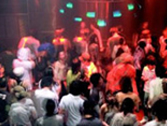
Itaewon is Seoul’s – or Korea’s for that matter – most exotic neighborhood, and is the place to go for just about any international cuisine and for non-Korean style nightlife. Yeouido is home to Seoul’s most prominent landmarks, including 63 City, IFC Mall, and the Noryangjin Fish Market. Experience the charm of the Han River at the Yeouido Hangang Park.
Gangnam
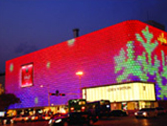
Popularized by Psy’s Gangnam Style, Gangnam refers to a part of Seoul situated on the south side of the Han River, and is most notable for high-end shopping, restaurants, unique cafés, and entertainment. Along with Bongeunsa (Temple) and the Banpo Moonlight Rainbow Fountain, Gangnam boasts some of the best sights in Seoul.
Jamsil
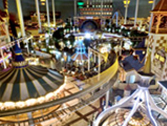
Jamsil is home to Asia’s premier indoor/outdoor amusement park, Lotte World, and large green parks. Located around Olympic Park, which was created to commemorate the 1988 Seoul Olympics, are remnants of Hanseong Baekje, an ancient Korean Kingdom that flourished around present-day Seoul from 18BCE-475CE.
For more information about Korea, please visit the Korea Tourism Organization website

Gyeongbokgung Palace
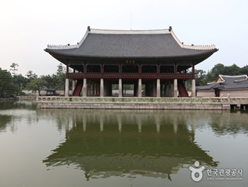
Introduction
Built in 1395, Gyeongbokgung Palace is also commonly referred to as the “Northern Palace” because it is the furthest north when compared to the neighboring palaces of Changdeokgung (Eastern Palace) and Gyeongheegung (Western Palace). Gyeongbokgung Palace is arguably the most beautiful and remains the grandest of all five palaces.
The premises were destroyed by fire during the Imjinwaeran War (Japanese Invasion, 1592-1598). However, all of the palace's 7,700 rooms were later restored under the leadership of Heungseondaewongun during the reign of King Gojong (1852-1919) .
Remarkably, the most representative edifices of the Joseon Dynasty, Gyeonghoe-ru Pavilion and Hyangwonjeong Pond are still relatively in tact. Woldae and the sculptures of Geunjeongjeon (The Royal Audience Chamber) represent past sculpture of contemporary art.
The National Palace Museum of Korea is located south of Heungnyemun Gate, and the National Folk Museum is located east within Hyangwonjeong.
Address
ENG: 161 Sajik-ro, Jongno-gu, Seoul (Sejong-ro)KOR: 서울특별시 종로구 사직로 161 (세종로)
Inquiries
- 1330 Travel Hotline: +82-2-1330 (Korean, English, Japanese, Chinese)
- For more info: +82-2-3700-3904~5 / +82-2-738-9171
Website
royalpalace.go.kr (Korean, English)
Insa-dong
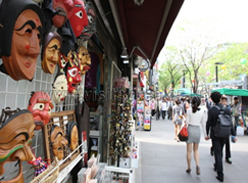
Introduction
Insa-dong (인사동), located in the heart of the city, is an important place where old but precious and traditional goods are on display. There is one main road in Insa-dong with alleys on each side. Within these alleys are galleries, traditional restaurants, traditional teahouses, and cafes.
The galleries are the heartbeat of Insa-dong. There are about 100 galleries in the area and you can see every example of traditional Korean fine art from paintings to sculptures. The most famous galleries are Hakgojae Gallery, which functions as the center of folk art, Gana Art Gallery, which promotes many promising artists, and Gana Art Center.
The teahouses and restaurants are the perfect complement to the galleries. At first they might be hard to find, but if you take the time to stroll around the twisting alleyways, the window shopping in itself can be very entertaining. The shops in Insa-dong are very popular among all age groups, because each one is unique.
Every Saturday from 14:00 – 22:00 and Sunday from 10:00 – 22:00, some streets are blocked off from traffic and it becomes a cultural space. Stores set up booths outside and others set up shops (Korean candy merchants and fortune tellers.) There are traditional performances and exhibits as well. Insa-dong is especially popular with foreign tourists. This is where they can experience and see traditional Korean culture firsthand, and also purchase pieces of fine art. On the street you can eat Korean taffy and traditional pajeon (Korean pancake), and see many foreigners lost in all the joyous festivities of the street.
Address
ENG: 130-4 Insa-dong, Jongno-gu, SeoulKOR: 서울 종로구 인사동 130-4일대
Inquiries
- Tourist Hotline: +82-2-1330 (Korean, English, Japanese, Chinese)
- For more info: +82-2-734-0222
Website
www.insainfo.or.kr (Korean only)
www.visitseoul.net (Korean, English, Chinese, Japanese)
Bukchon Hanok Village
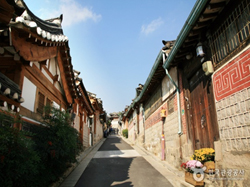
Introduction
Surrounded by Gyeongbokgung Palace, Changdeokgung Palace and Jongmyo Shrine, Bukchon Hanok Village is home to hundreds of traditional houses called 'hanok' that date back to the Joseon Dynasty. The name, 'Bukchon,' which literally translates to 'northern village,' came about as the neighborhoods that the village covers lie to the north of the two significant Seoul landmarks, Cheonggyecheon Stream
and Jongno. Today, many of these hanoks operate as cultural centers, guesthouses, restaurants and tea houses, providing an opportunity to experience, learn and immerse in Korean traditional culture.
Address
37, Gyedong-gil, Jongno-gu, Seoul서울특별시 종로구 계동길 37 (계동)
Inquiries
- 1330 Travel Hotline: +82-2-1330 (Korean, English, Japanese, Chinese)
- For more info: +82-2-3707-8388
Website
bukchon.seoul.go.kr (Korean, English, Japanese, Chinese)
Myeong-dong
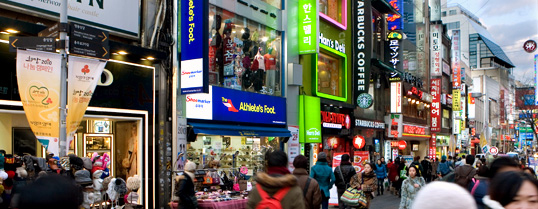
Introduction
Myeong-dong is one of the busiest places in Seoul and is among Korea’s premier shopping destinations. Over 1 million shoppers pass through this area each and every day. Located in the heart of Seoul, Myeong-dong market has been a witness to Korea’s tumultuous modern-day history as a center of city politics, economy, and culture. To international visitors, Myeong-dong is a stunning shopping district with countless shops and restaurants. Its wild popularity has led to similar shopping districts springing up all across the country.
International Shopping District
Two anchor department stores (Lotte and Shinsegae) and a number of large shopping malls lie along the streets of Myeong-dong. Shops for clothing or cosmetics can be seen at every corner, and street stalls dot the spaces in between, offering tasty snacks, inexpensive clothes, or sparkling accessories. The air is abuzz with the mix of foreign languages as shopkeepers and international tourists haggle in English, Japanese, and more. The area’s well-developed transportation grid makes it the ideal place for visitors who may not yet be familiar with the city.
Fashion, Cosmetics and More!
Thousands of brands are sold in Myeong-dong. The two major department stores sell mostly luxury brands while shopping malls such as H & M and Migliore offer selections at more modest prices. Relatively inexpensive products can be easily purchased at street stalls and other shops.
Every Korean cosmetic brand has a branch in Myeong-dong. The market is home to roughly a thousand cosmetic shops and hundreds of skin-care stores, with several large cosmetic shops clustered around the central street (Jungang-gil) and Myeongdong Theater. Sales associates usually can speak a few foreigner languages (to some degree), which makes for a pleasant shopping experience for international visitors who don’t speak Korean. For the added convenience of international shoppers, many fliers are written in other languages as well.
Aside from shopping, visitors can check out the Myeongdong Cathedral and the nearby Namdaemun Market, a market with over 600 years of history. Myeong-dong’s combination of historical significance, nearby tourist attractions, and prime shopping has established it as the ultimate tourist destination in Seoul.
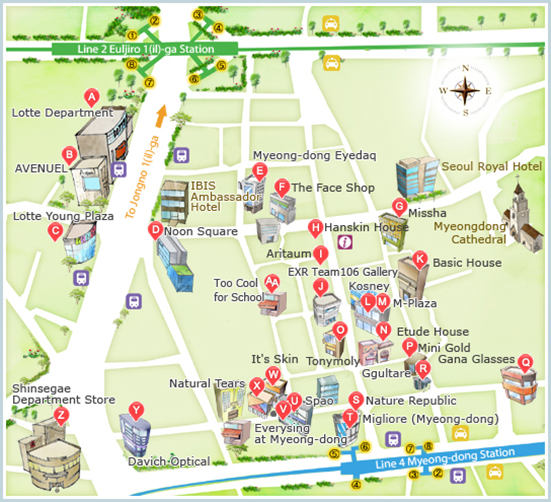
For more information about Korea, please visit the Korea Tourism Organization website










